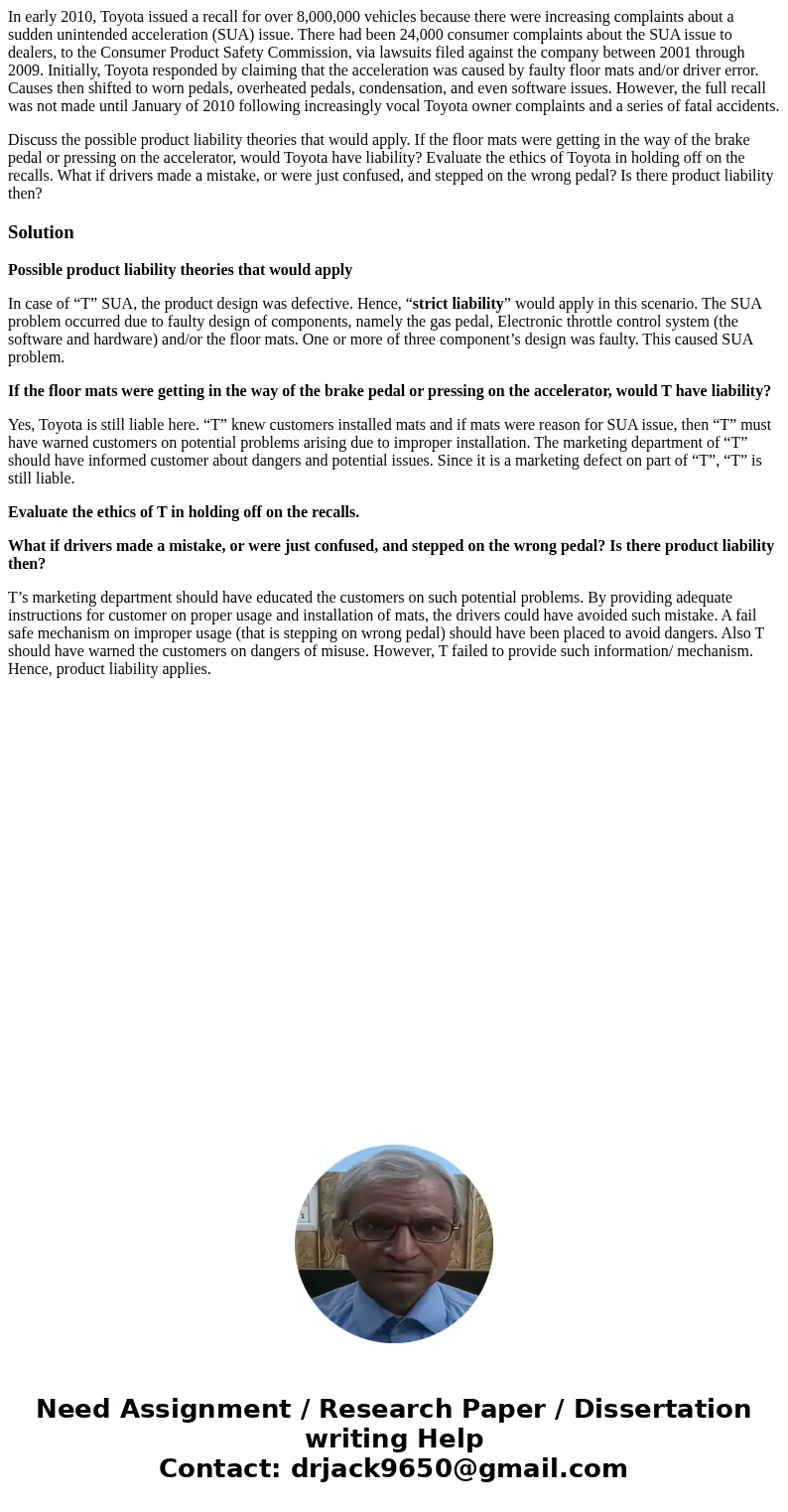In early 2010 Toyota issued a recall for over 8000000 vehicl
In early 2010, Toyota issued a recall for over 8,000,000 vehicles because there were increasing complaints about a sudden unintended acceleration (SUA) issue. There had been 24,000 consumer complaints about the SUA issue to dealers, to the Consumer Product Safety Commission, via lawsuits filed against the company between 2001 through 2009. Initially, Toyota responded by claiming that the acceleration was caused by faulty floor mats and/or driver error. Causes then shifted to worn pedals, overheated pedals, condensation, and even software issues. However, the full recall was not made until January of 2010 following increasingly vocal Toyota owner complaints and a series of fatal accidents.
Discuss the possible product liability theories that would apply. If the floor mats were getting in the way of the brake pedal or pressing on the accelerator, would Toyota have liability? Evaluate the ethics of Toyota in holding off on the recalls. What if drivers made a mistake, or were just confused, and stepped on the wrong pedal? Is there product liability then?
Solution
Possible product liability theories that would apply
In case of “T” SUA, the product design was defective. Hence, “strict liability” would apply in this scenario. The SUA problem occurred due to faulty design of components, namely the gas pedal, Electronic throttle control system (the software and hardware) and/or the floor mats. One or more of three component’s design was faulty. This caused SUA problem.
If the floor mats were getting in the way of the brake pedal or pressing on the accelerator, would T have liability?
Yes, Toyota is still liable here. “T” knew customers installed mats and if mats were reason for SUA issue, then “T” must have warned customers on potential problems arising due to improper installation. The marketing department of “T” should have informed customer about dangers and potential issues. Since it is a marketing defect on part of “T”, “T” is still liable.
Evaluate the ethics of T in holding off on the recalls.
What if drivers made a mistake, or were just confused, and stepped on the wrong pedal? Is there product liability then?
T’s marketing department should have educated the customers on such potential problems. By providing adequate instructions for customer on proper usage and installation of mats, the drivers could have avoided such mistake. A fail safe mechanism on improper usage (that is stepping on wrong pedal) should have been placed to avoid dangers. Also T should have warned the customers on dangers of misuse. However, T failed to provide such information/ mechanism. Hence, product liability applies.

 Homework Sourse
Homework Sourse